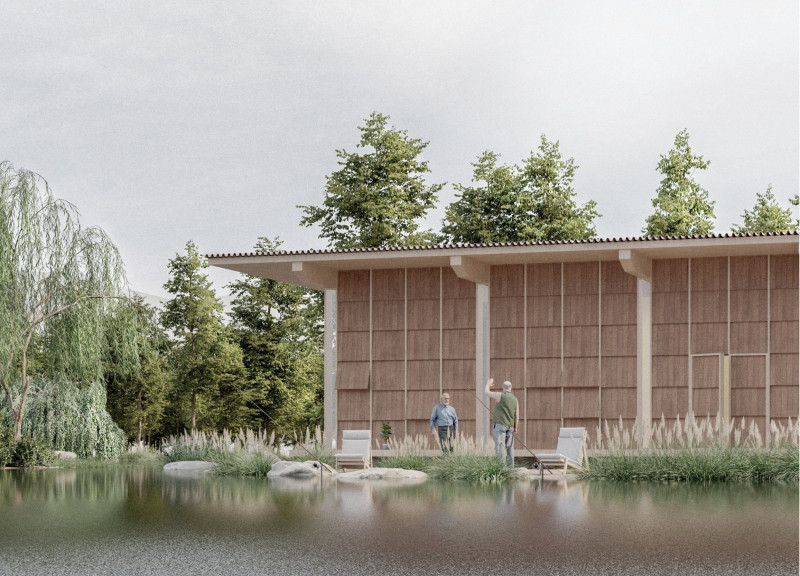5 key facts about this project
At its core, this architectural design signifies a commitment to functionality and aesthetic harmony. The building serves multiple purposes, accommodating spaces for various community activities, including meeting rooms, recreational areas, and open spaces that encourage social interaction. This multifaceted approach fosters a sense of belonging and accessibility, welcoming individuals from diverse backgrounds to engage in communal activities.
The design is characterized by its seamless flow between indoor and outdoor spaces, which is a central theme throughout the project. Large, strategically placed windows facilitate natural light penetration, enhancing the experience within these communal areas and creating a direct connection with the outdoors. This emphasis on transparency not only allows for visual continuity but also encourages environmental awareness among its users.
The materials selected for the construction of this project play a pivotal role in its architectural identity. A careful balance of concrete and glass alongside sustainable wood elements reflects a dedication to durability and aesthetic quality. The use of these materials communicates a clear narrative of resilience and connection to nature, enabling the building to blend harmoniously within its urban landscape.
Unique design approaches are evident throughout this architectural endeavor, particularly in the innovative use of space and form. The layout emphasizes versatility, allowing areas to adapt as needs change, which is crucial in a community-centric building. Furthermore, the integration of green roofs and landscaping not only contributes to the building's energy efficiency but also enhances urban biodiversity, showing a profound respect for environmental stewardship.
Attention to detail is apparent in the selection of fixtures, finishes, and landscaping elements that reflect the project’s commitment to user experience. The choice of finishes promotes sustainability while providing a modern aesthetic that aligns with current architectural trends. Additionally, elements such as seating areas, outdoor terraces, and integrated technology add layers of functionality that elevate the everyday engagement of users.
This architectural project represents more than just physical space; it embodies a progressive approach to community living through architecture. By prioritizing user engagement and environmental consciousness, it serves as an exemplary model of how thoughtful design can foster social interaction and sustainable practices concurrently.
For those interested in delving deeper into the features that make this project noteworthy, exploring the architectural plans, sections, and designs will provide valuable insights into the thoughtful execution of ideas that characterize this remarkable endeavor. This ongoing exploration of the architectural ideas behind the project allows for a greater appreciation of its significance within the broader architectural discourse.























